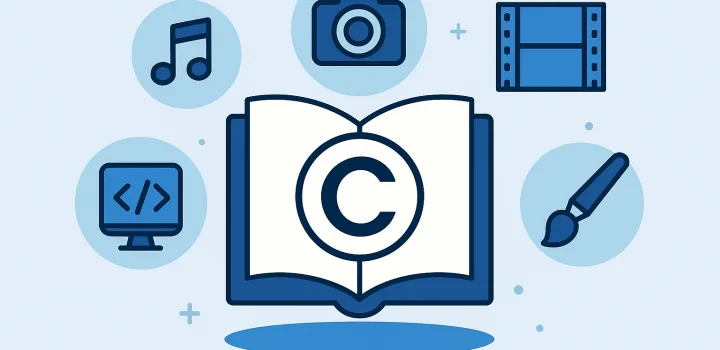Copyright

What is copyright?
Copyright is the right of a creator over the results of their creative work. It protects literary, artistic, musical works, software, photos, videos, websites, and other creative products. Copyright does not protect ideas themselves, only their expression.
For example, a book plot alone is not protected, but the text you write is covered by copyright.
Why copyright is important
- Protects creativity – no one can copy or publish your work without permission.
- Commercialization – you can sell, license, or transfer your rights.
- Incentive for creation – gives confidence that your work will be protected.
- Recognition – ensures the author’s name is credited.
What is protected
- Literary works – books, articles, poems
- Musical works – songs, melodies
- Artistic works – paintings, drawings, sculptures
- Photos and videos
- Software – code, apps, websites
Not protected: ideas, methods, or principles – only their expression.
How copyright arises
In most countries, copyright arises automatically upon creation. Registration is optional but useful for proof of authorship and licensing.
Author’s rights
- Moral rights – credit as author, protection of reputation
- Economic rights – use, sell, license, and earn income
Duration
- Life of the author + 70 years (usually)
- Anonymous or corporate works – often 50–70 years from publication
Examples
- Harry Potter books – text, illustrations
- The Beatles – music compositions
- Microsoft Office – software
- Company websites – design, texts, graphics
Summary
Copyright is a fundamental tool for protecting creativity and commercial value. It ensures creators control the use of their work, receive compensation, and build reputation.
